Kiwi farming is the cultivation of Kiwifruit, a delicious and nutrient-rich fruit that grows on woody vines. The Kiwi plant, scientifically known as Actinidia deliciosa, belongs to the family Actinidiaceae.
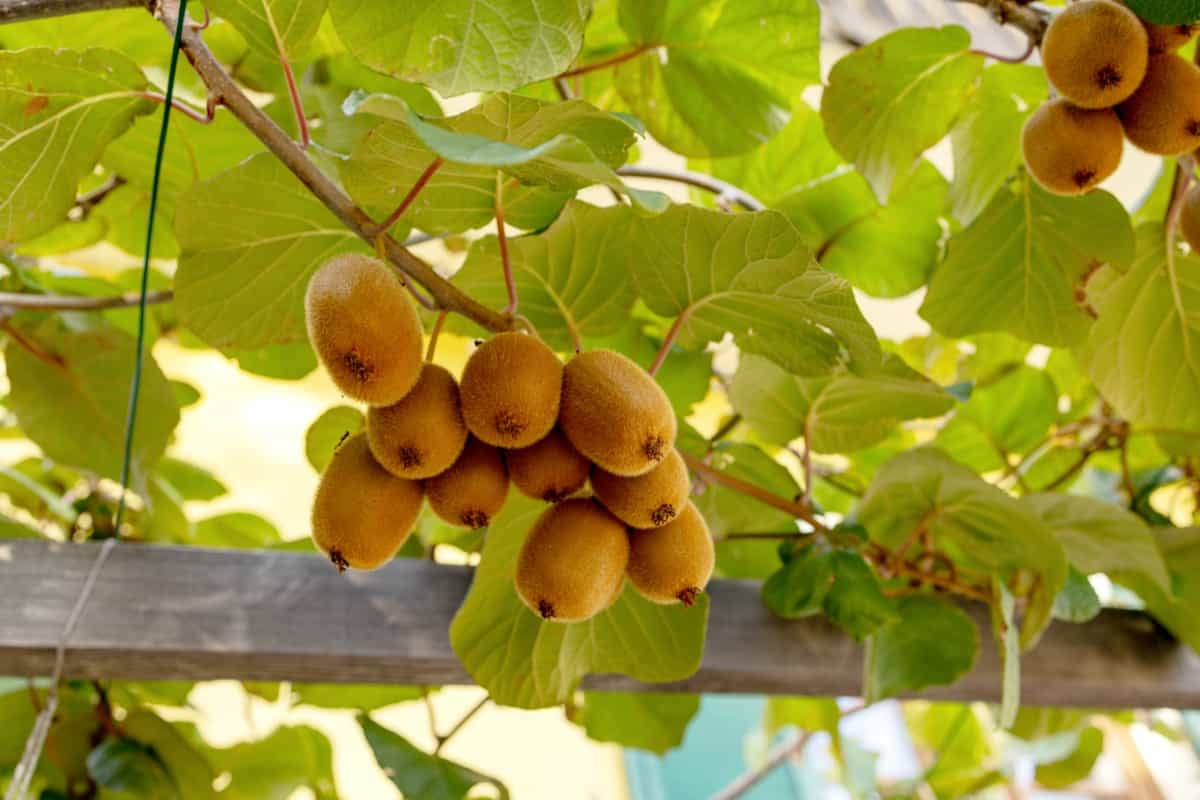
Overview of Kiwi Farming
Kiwi farming is significant in the agricultural sector due to its high nutritional value and economic potential. Cultivating Kiwi fruits provides a sustainable income source for farmers while also contributing to local and global food supply chains. Kiwi farming is a fascinating venture that involves cultivating delicious and nutritious fruit.
Best Varieties for Commercial Cultivation
The best-known variety is the Hayward Kiwi, known for its delicious flavor and high yield potential. Another excellent choice is the Bruno variety, prized for its large fruit size and disease resistance. For those looking for something unique, the Blake variety offers a sweeter taste profile compared to traditional Kiwis.
Additionally, the Abbott variety is favored for its early maturation period, allowing farmers to capitalize on an extended harvesting season. If you’re interested in organic farming practices, then the Monty’s Surprise variety could be a great fit due to its resistance to pests and diseases. Other popular varieties include Monty, Allison, and Matua.
Site Selection and Soil Requirements
Kiwi vines thrive in well-drained soils with good fertility levels. It’s important to choose a site that receives sunlight and is protected from strong winds. Ideally, the soil should have a pH between 5.0 and 6.5 for optimal growth. Avoid areas prone to waterlogging, as Kiwi plants are sensitive to excessive moisture, which can be affected by root rot. Additionally, selecting a site with proper air circulation can help prevent diseases and promote healthy vine growth.
Climate Considerations for Kiwi Growth
Kiwis thrive in temperate climates with mild winters and warm summers. They need a long growing season with ample sunlight to produce high-quality fruits. Kiwi plants are sensitive to extreme temperatures, especially frost. It’s important to select a place that offers protection from harsh weather conditions. Adequate airflow is also important to prevent diseases and promote healthy plant growth.
Ideally, Kiwi vines should be planted in areas with well-draining soil to avoid waterlogging. Excessive moisture can lead to some issues that may negatively affect fruit production. In regions where winters are too cold, consider planting cold-hardy varieties or providing winter protection, such as mulching around the base of the plants.
In case you missed it: High-Density Kiwi Plantation: Spacing, Plants Per Acre, Techniques, Cost, and Yield
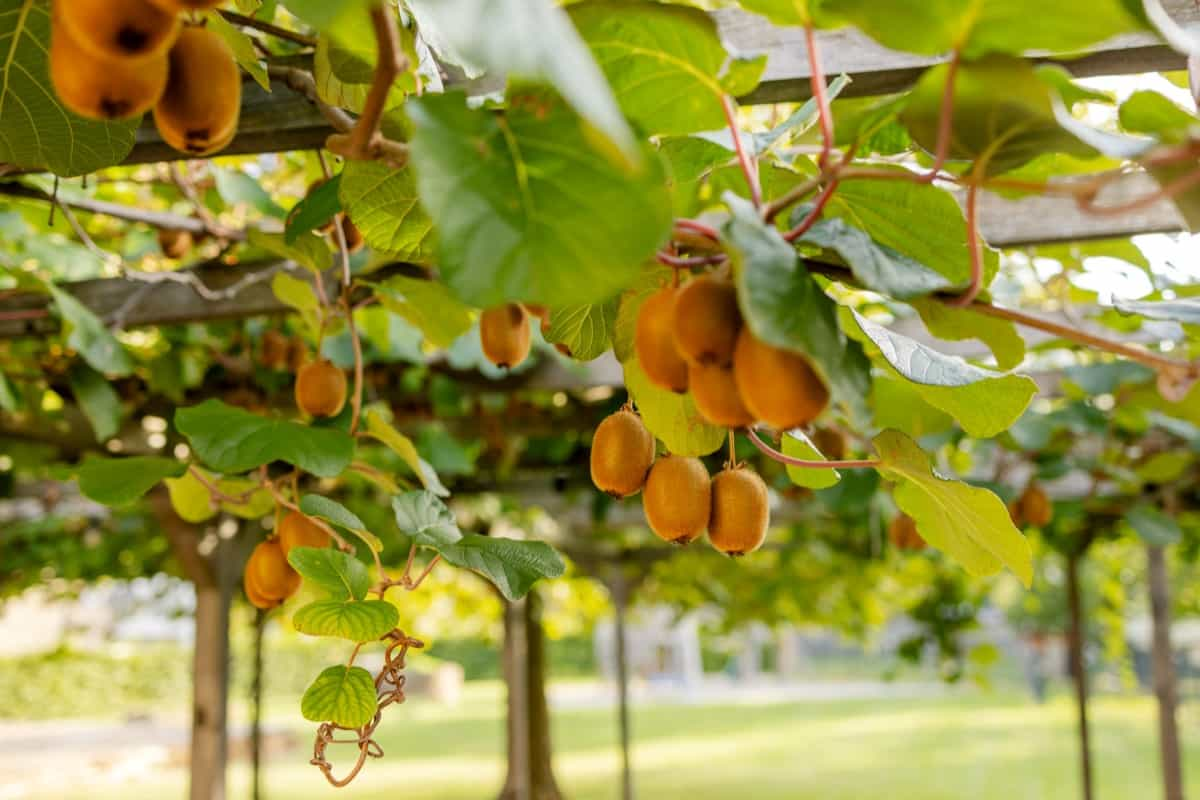
Propagation Techniques
Propagation involves creating new Kiwi plants from existing ones, ensuring a healthy and sustainable orchard.
Seeds
Kiwi seeds can be collected from ripe fruits and cleaned and dried. They can then be sown directly into a prepared seedbed or pots filled with a suitable growing medium. Compared to some other methods, Kiwi seeds may take longer to germinate, and not all seeds will produce plants with desirable traits. However, this method is straightforward and can yield new plants.
Cuttings
Semi-hardwood or hardwood cuttings are taken from healthy Kiwi plants during the dormant season (usually late autumn or winter). Cuttings are typically 8-12 inches long and include several nodes. Remove any leaves from the lower part of the cutting and dip the cut end in a rooting hormone to encourage root growth. Plant the Kiwi cuttings in a well-draining rooting medium, keeping them moist and providing bottom heat to stimulate root development. Once roots have developed, the cuttings can be transplanted into pots or the field.
Grafting
Grafting is a common technique used in commercial Kiwi production, especially for cultivars that do not grow true to type from seeds. Typically, a rootstock is selected for its vigor and disease resistance, while the scion (the upper part of the plant with desired traits) is selected from a desirable cultivar. The two are joined together using grafting techniques such as cleft grafting or whip and tongue grafting. Grafted plants are then grown until they are ready for planting in the field.
Planting Methods and Layout
Kiwis are typically planted in rows with sufficient spacing between each vine to allow for proper growth and development. Before planting, ensure that the well-drained soil and rich in organic matter to provide optimal conditions for the roots to establish themselves. Planting during the spring or fall seasons when temperatures are moderate is ideal for promoting healthy growth.
When laying out your Kiwi farm, consider factors such as sunlight exposure and access to water sources. Vines should be positioned to receive adequate sunlight throughout the day while also being mindful of irrigation needs. To maximize yield potential, follow recommended guidelines for spacing based on the specific variety of Kiwi you are cultivating.
Irrigation Management
Proper watering is essential for supporting growth and fruit development throughout the season. Kiwi plants require consistent moisture levels, especially during periods of active growth and fruit set. Drip irrigation systems are commonly used in Kiwi orchards to deliver water directly to the roots, minimizing wastage and promoting efficient resource utilization.
It’s important to monitor soil moisture levels regularly and adjust irrigation schedules according to plant needs. Overwatering the Kiwi plant can lead to root rot, while underwatering can result in poor fruit quality.
Fertilization and Nutrient Requirements
Fertilization is a crucial aspect of Kiwi farming, as it directly impacts the growth and productivity of the vines. Kiwi plants have specific nutrient requirements that need to be met for optimal health and fruit development. Soil testing should be done to determine deficiencies and adjust the fertilizer accordingly to ensure proper fertilization. Nitrogen, phosphorus, and potassium are major macronutrients and micronutrients that are essential for Kiwi plant growth.
In case you missed it: How to Grow Kiwi in USA: A Farming and Production Guide to Planting to Harvesting for Beginners
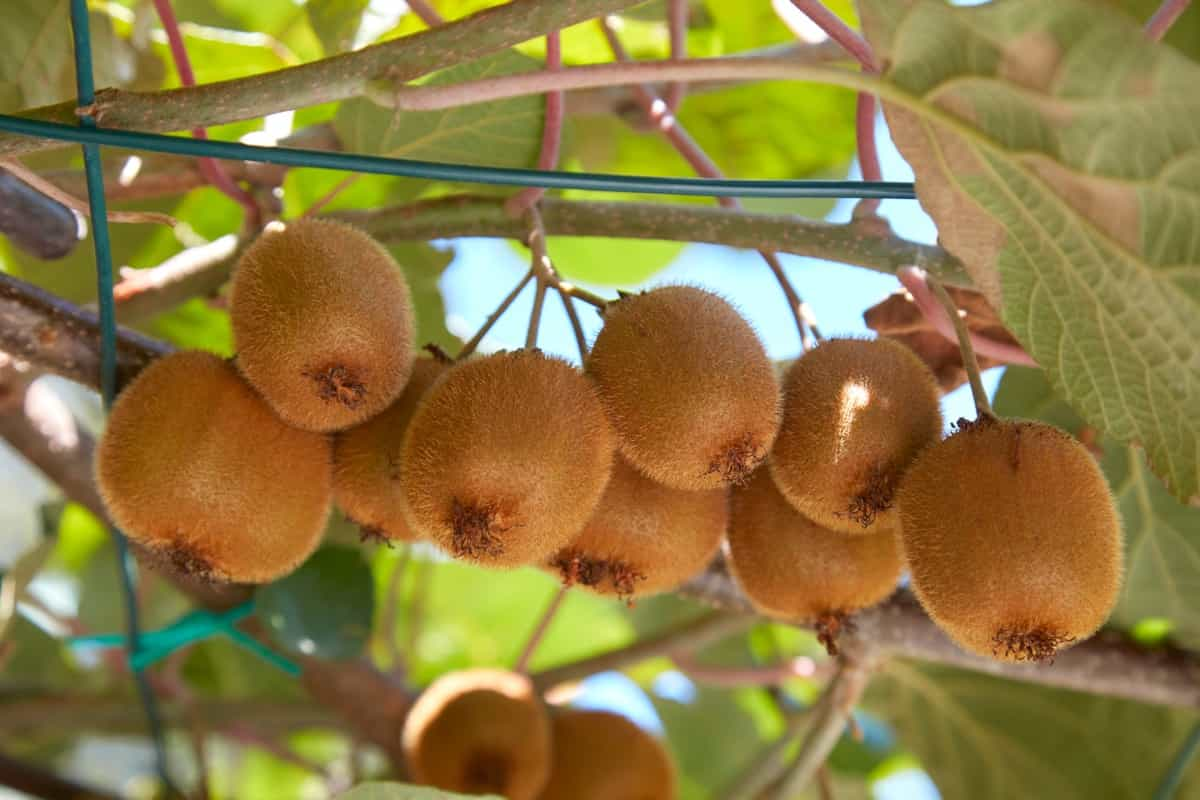
Organic fertilizers like compost or manure can improve soil fertility naturally. Regular monitoring of plant nutrient levels is important to prevent deficiencies or excesses that may hinder plant growth. Applying fertilizers at the right time and in the correct amounts is key to promoting healthy vine growth and high fruit yields.
Pest and Disease Management
Pests and diseases can be a real problem for Kiwi farmers. They can affect your crop if not managed properly. Some common pests that you might encounter include aphids, mites, and scale insects. These creatures can suck the life out of your vines if left unchecked. To combat these pesky intruders, integrated pest management strategies are key. This involves using a combination of biological controls, cultural practices, and targeted pesticide applications when necessary.
By monitoring your vines regularly, you can catch any issues early on and take action swiftly. Fungal infections like powdery mildew and bacterial canker are common culprits in Kiwi farming. Regular monitoring of the vine’s health is essential to catch any signs of infestation early on. By staying vigilant and proactive in pest and disease management, farmers can effectively protect their Kiwi crop investment.
Pruning and Training Kiwi Vines
Regular pruning helps maintain vine health and allows for better sunlight penetration, leading to higher yields. When it comes to training Kiwi vines, the goal is to create a strong framework that supports the weight of the fruit. The common method is using a T-bar trellis system or pergola-style trellis to support the vines as they grow. This not only helps with structural support but also makes harvesting easier.
Additionally, proper pruning techniques involve removing dead or diseased wood, thinning out crowded areas, and shaping the vines for better air circulation. It’s important to prune during dormancy in late winter or early spring. By following these practices diligently, farmers can promote healthy vine growth and maximize fruit production come harvest time.
Pollination Requirements
Kiwi plants are dioecious, meaning there are separate male and female vines. This makes it necessary to have both genders nearby for successful pollination. Bees play a vital role in pollinating Kiwi flowers. To ensure effective pollination, it’s recommended to place beehives near the orchard during flowering season. Some growers also opt for hand-pollination techniques by collecting pollen from male flowers and manually transferring it to female flowers using a small brush. This method can help increase fruit yield in cases where natural pollinators may be limited.
Tips to Boost Flowering and Yield
Ensure your Kiwi vines receive adequate sunlight. Kiwis thrive in full sun, so make sure they have access to at least 6-8 hours of sunlight daily. Pay close attention to irrigation practices. Consistent watering is crucial for healthy growth and fruit production. Avoid overwatering or underwatering, as both can negatively impact flowering and yield.
In case you missed it: Top 15 Steps to Boost Kiwi Yield: How to Increase Production, Fruit Size, and Quality
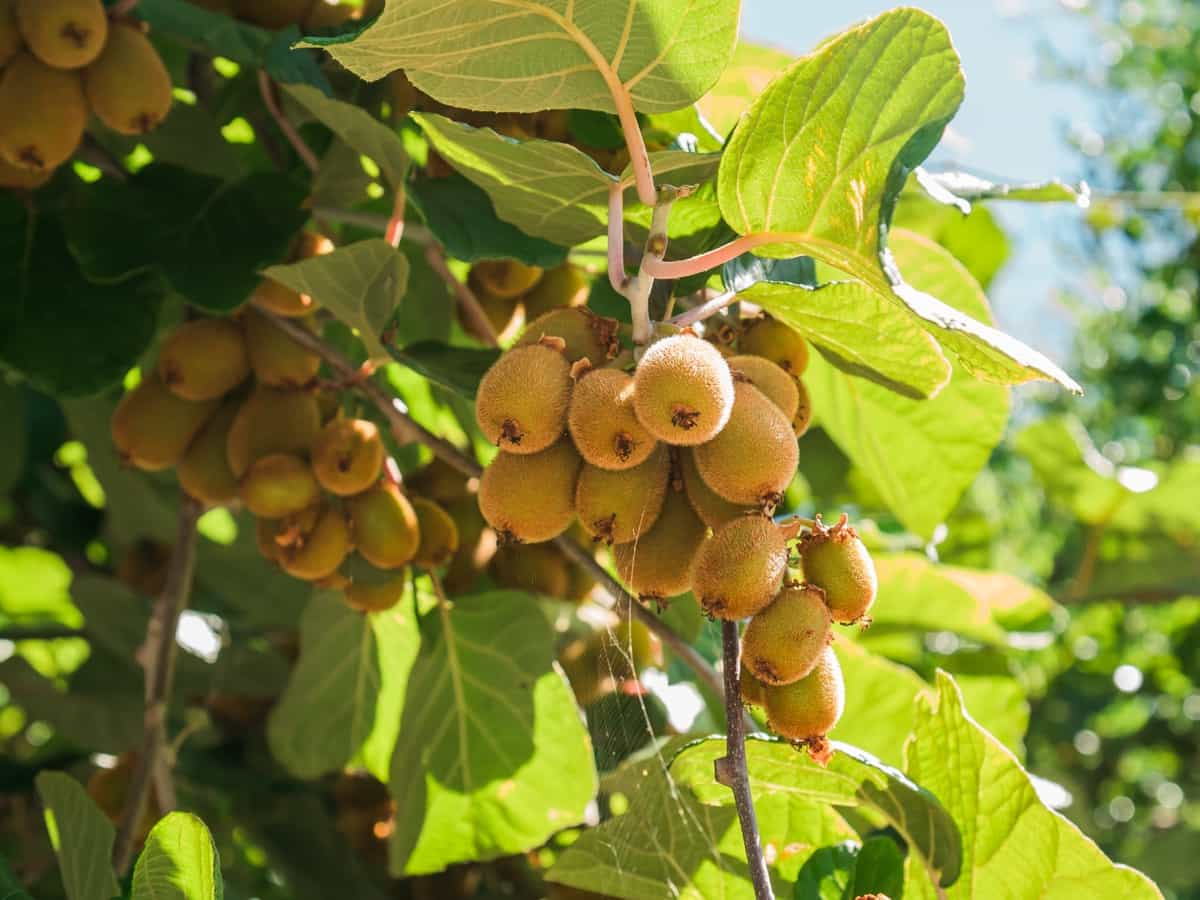
Additionally, consider implementing a regular fertilization schedule. Providing the necessary nutrients will support vigorous growth and abundant fruit production. Pruning is another key aspect of boosting flowering and yield. Regular pruning helps maintain plant health, encourages new growth, and enhances fruit quality.
Monitoring Plant Health
Monitoring plant health is crucial in Kiwi farming to ensure the vines thrive and produce quality fruit. Regularly inspecting the leaves, stems, and fruits for any signs of disease or pest infestations helps prevent issues from escalating. Look for yellowing leaves, wilting, or unusual spots that could indicate a problem.
In addition to visual inspections, it’s essential to monitor soil moisture levels and pH balance regularly. Another aspect of monitoring plant health is observing the vine’s overall growth pattern throughout the season. Look for any stunted growth or lack of new shoots, which could signal underlying issues such as nutrient deficiencies or root rot.
Harvesting and Yield Optimization
When it comes to harvesting Kiwi fruits, timing is key. Ensure the fruits are ripe but firm before picking them – soft Kiwis won’t hold up well during transportation. Gently twist the fruit off the vine to avoid damaging both the fruit and the plant. Yield optimization starts with proper handling post-harvest. Sort the fruits based on size and quality for better marketability.
Store them in a cool, humid environment to extend their shelf life. Maintaining consistent irrigation and fertilization practices throughout the growing season can significantly impact your overall yield. Monitor plant health regularly to catch any issues early on and prevent potential crop loss.
Expected Yield
The amount of fruit you can harvest per acre can vary depending on various factors. Factors such as the variety of Kiwi grown, soil quality, climate conditions, and proper management practices play a crucial role in finding fruit yield. On average, a well-maintained Kiwi vine can produce between 100 and 400 pounds of fruit per season.
However, with optimal farming techniques and care, some farmers have reported yields reaching up to 600 to 800 pounds per acre. This impressive yield not only brings financial benefits but also showcases the potential of successful Kiwi farming.
Post-Harvest Handling and Storage
Post-harvest handling and storage are crucial steps in ensuring the quality and shelf life of Kiwi fruit. After harvesting, it is important to sort the fruit based on size, shape, and ripeness to maintain uniformity. Proper packaging is essential to protect the delicate skin of Kiwis during transportation. Storage conditions play a major role in preserving the freshness of Kiwi fruit. Kiwis should be stored at specific temperatures and humidity levels to prevent premature ripening or decay.
In case you missed it: How to Increase Flowering in Fruit Trees: Step-by-Step Guide for Beginners
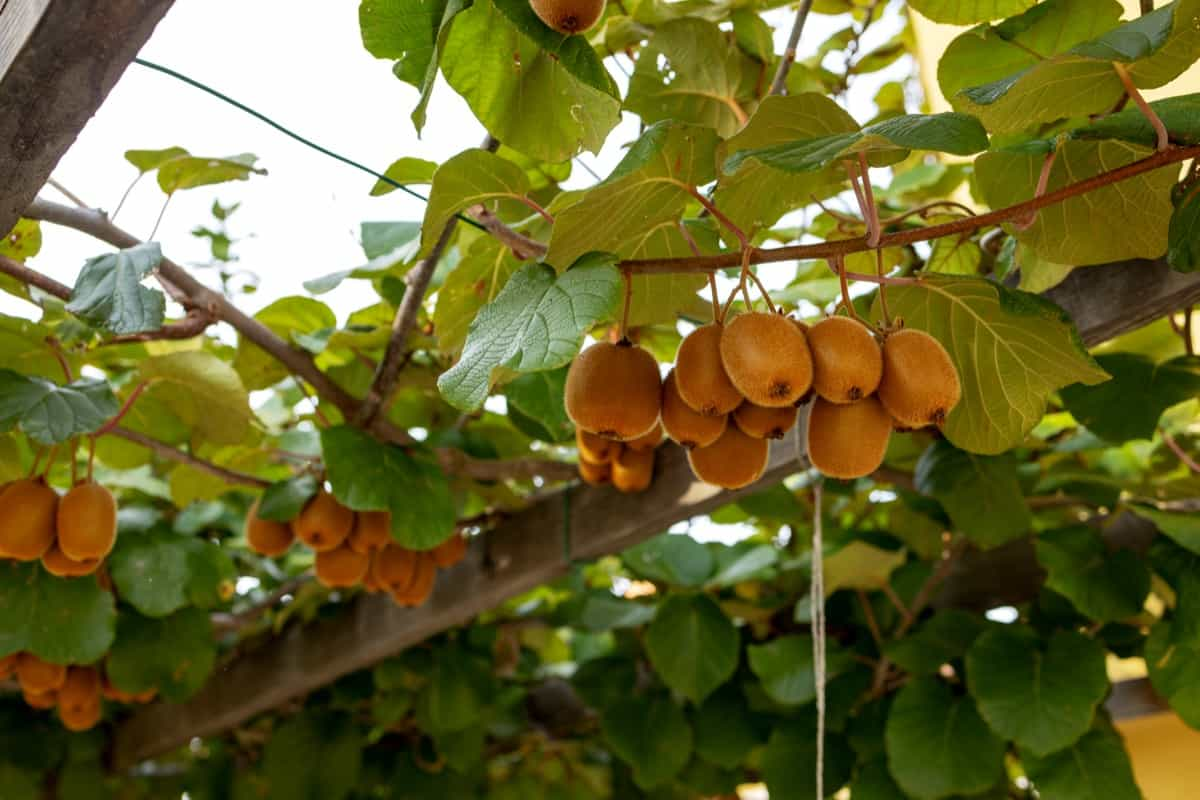
Cold storage facilities with controlled atmospheres can significantly extend the shelf life of Kiwis. Regular monitoring of stored Kiwis is necessary to identify any signs of spoilage or deterioration early on. It’s vital to remove any damaged or rotting fruits promptly to prevent further contamination.
Marketing and Selling Kiwi Fruit
A strong marketing strategy is essential to reaching potential customers. To showcase your fresh Kiwis, utilize social media platforms, farmer’s markets, and local grocery stores. Highlight the unique health benefits of Kiwi fruit to attract consumers looking for nutritious options. Creating eye-catching packaging can also help differentiate your product on the market shelves.
Consider offering promotions or discounts during peak seasons to drive sales and increase brand visibility. Building relationships with retailers is key to ensuring a flow of sales throughout the year. Watch market trends and consumer preferences to adjust your marketing strategies accordingly.
Sustainability Practices in Kiwi Farming
Implementing sustainable techniques benefits the environment and contributes to the long-term success of the farm. The key practice is water conservation—using drip irrigation systems can reduce water wastage and promote efficient usage. Additionally, incorporating organic fertilizers and natural pest control methods helps maintain soil health and biodiversity on the farm. Furthermore, integrating renewable energy sources like solar panels can help reduce carbon footprint and lower energy costs.
In case you missed it: 14 Natural Ways to Treat Fruit Rot: Organic Homemade Recipes for Preventing Fruit Rot
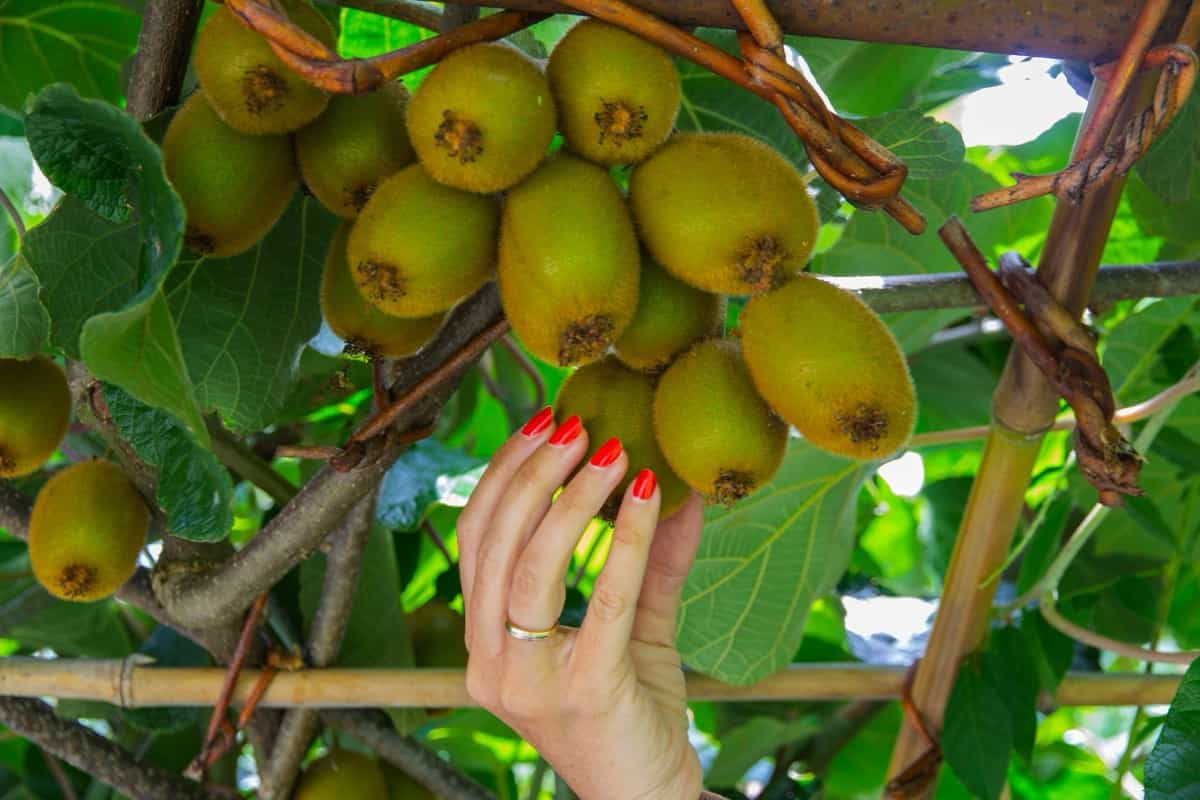
Supporting local communities with fair labor practices and ethical sourcing adds another layer of sustainability to the operation. Kiwi farming is a rewarding and profitable venture that requires proper planning, management, and care to produce high-quality fruits. Regular maintenance, including pruning, fertilizing, and pest management, will help ensure abundant fruit production.
- Types of Pesticides Used in Agriculture: A Beginner’s Guide
- Economical Aquaculture: A Guide to Low-Budget Fish Farming
- 15 Common Planting Errors That Can Doom Your Fruit Trees
- How to Make Houseplants Bushy: Effective Tips and Ideas
- Innovative Strategies for Boosting Coconut Pollination and Yield
- Pollination Strategies for Maximum Pumpkin Yield
- The Complete Guide to Chicken Fattening: Strategies for Maximum Growth
- Natural Solutions for Tulip Problems: 100% Effective Remedies for Leaf and Bulb-Related Issues
- Revolutionizing Citrus Preservation: Towards a Healthier, Greener Future
- Natural Solutions for Peony Leaf and Flower Problems: 100% Effective Remedies
- Maximizing Profits with Avocado Contract Farming in India: A Comprehensive Guide
- Natural Solutions for Hydrangea Problems: 100% Effective Remedies for Leaf and Flowers
- The Ultimate Guide to Choosing the Perfect Foliage Friend: Bringing Life Indoors
- From Sunlight to Sustainability: 15 Ways to Use Solar Technology in Agriculture
- The Ultimate Guide to Dong Tao Chicken: Exploring from History to Raising
- The Eco-Friendly Makeover: How to Convert Your Unused Swimming Pool into a Fish Pond
- Mastering the Art of Delaware Chicken Farming: Essentials for Healthy Backyard Flocks
- 20 Best Homemade Fertilizers for Money Plant: DIY Recipes and Application Methods
- How to Craft a Comprehensive Free-Range Chicken Farming Business Plan
- Brighten Your Flock: Raising Easter Egger Chickens for Beauty and Bounty
- How to Optimize Your Poultry Egg Farm Business Plan with These Strategies
- Subsidy for Spirulina Cultivation: How Indian Government Schemes Encouraging Spirulina Farmers
- Ultimate Guide to Raising Dominique Chickens: Breeding, Feeding, Egg-Production, and Care
- Mastering the Art of Raising Jersey Giant Chickens: Care, Feeding, and More
- Ultimate Guide to Raising Legbar Chickens: Breeding, Farming Practices, Diet, Egg-Production
- How to Raise Welsummer Chickens: A Comprehensive Guide for Beginners
- How to Protect Indoor Plants in Winter: A Comprehensive Guide
- Ultimate Guide to Grow Bag Gardening: Tips, Tricks, and Planting Ideas for Urban Gardeners
- Guide to Lotus Cultivation: How to Propagate, Plant, Grow, Care, Cost, and Profit
- Agriculture Drone Subsidy Scheme: Government Kisan Subsidy, License, and How to Apply Online
- Ultimate Guide to Raising Araucana Chickens: Breed Profile, Farming Economics, Diet, and Care
- Bringing Hydroponics to Classroom: Importance, Benefits of Learning for School Students
- Ultimate Guide to Raising Polish Chickens: Breed Profile, Farming Economics, Diet, and Care
- Ultimate Guide to Raising Australorp Chickens: Profile, Farming Economics, Egg Production, Diet, and Care
- Silkie Chicken Farming: Raising Practices, Varieties, Egg Production, Diet, and Care
- Sussex Chicken Farming: Raising Practices, Varieties, Egg Production, Diet and Care
Am happy about the article on kiwi farming information guide for beginners. Can i get a copy of this through my email.
Thanks for your comments, sorry we can not distribute through emails.
I have 13 cents of steep land in Kodaikanal, Tamil Nadu..
1. Is it viable to put up a Kiwi farm in 13 cents.
2. Which variety of Kiwi is suitable for the climate in Kodaikanal..
3. Is there any nursery in Kodaikanal that supply Kiwi grafted plants.
Excellent.
I’m interested on kiwi farming did you know where I can buy for the Planting Materials (Male & Female Seedlings). Thus can be shipped to the Philippines. Please I’m waiting for the information.
You better search local nurseries in Philippines. We don’t have much kiwi farms in India.
Sir, may I know we’re can I buy kiwi plants in kashmir, and also I want to know that is kiwi fruit cultivation profitable than apple fruit cultivation
Kiwi and Apple have different market profitability. For Kiwi plants, you can check online like Amazon.
i am interested in buying grafted kiwi plants for my personal use
Pls advise from where I can get these
Can I grow kiwi in hill .Iam from northeast India
yes
Will it be suitable to cultivate the KIWI in west bengal, india?
Can I get crash courses online for apple and kiwi
Req. of kiwi plant for domestic garden.
Sir iam from Karnataka (Bidar district) iam also interested to grow kiwi fruits in my 1 acre field(initially) can you please help me or is it suitable area and how can I planted.
I need the leaves of kiwi plants for my research work can you please provide me.